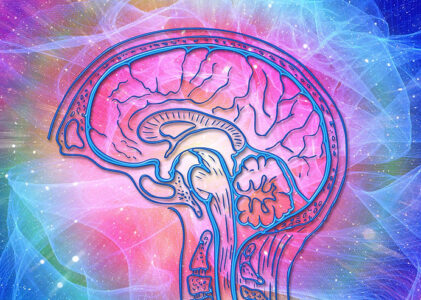What are Brain Waves?
Brain waves, also known as neural oscillations, are patterns of neural activity within the brain. These oscillations vary depending on numerous factors including what the individual is doing and how they are feeling. Lower frequency brain waves are associated with sleep and sluggish and slow feelings. Higher frequencies on the spectrum are associated with alertness and high-level information processing. These brain waves can be detected using electrodes and have been studied for almost 100 years. This article will outline each of the five types of brain waves (Delta, Theta, Alpha, Beta, Gamma) and provide an insight on how you can use this knowledge to benefit your everyday life.

Delta Waves (0.5Hz – 4Hz)
Delta waves are subconscious waves produced during sleep and are believed to be responsible for many unconscious bodily functions. Optimal levels of delta waves help strengthen the immune system and makes sleep more efficient in restoring energy levels. Low levels are attributed to poor sleep and inefficient healing of the body, while high levels can negatively affect the ability to think.
Theta Waves (4Hz – 8Hz)
Theta waves are also within the subconscious and are associated with being in a deeply relaxed state and the feeling of emotions. Having optimal levels of theta waves can assist with relaxation, creativity, emotional intelligence and empathy. Low levels are attributed to anxiety and stress, while high levels are associated with depression, impulsiveness and smaller attention span.
Alpha Waves (8Hz – 12Hz)
Alpha waves are between the conscious and subconscious and are dominant during subtle flowing thoughts. They are also highly active during REM sleep. Alpha waves are the basis of the resting state of the brain and are essential to high levels of creativity. They can assist with relaxation at optimal levels and can trigger anxiety and stress when levels are low. High levels can hurt the ability to focus.
Beta Waves (12Hz – 30Hz)
Beta waves are produced while awake and conscious and are present when during active concentration towards cognitive tasks such as speaking and thinking. It is responsible for the production rate of new ideas and solutions to problems. Having optimal levels will assist in focus, problem-solving and memory recall. Low levels can result in inattentiveness and depression, while high levels are associated with stress and anxiety.
Gamma Waves (30Hz – 100Hz)
Gamma waves are the highest frequency brain waves and are used in processing highly her level complex tasks. It is also utilised in learning, memory and gathering information from your senses. Optimal levels can assist with these functions, while the effects of levels too high or too low are similar to that of Beta waves.

How Can This Help You?
Brain waves define your performance throughout everyday life. It can be a powerful tool to normalise these neural oscillations and improve areas of your mind and body that are lacking or under high demand. In the next post, I’ll be going into binaural beats and their power to influence brain waves and improve your mind as a whole. You can also check out Affirmate, the app which combines binaural beats with spoken affirmations to positively impact your mind.


